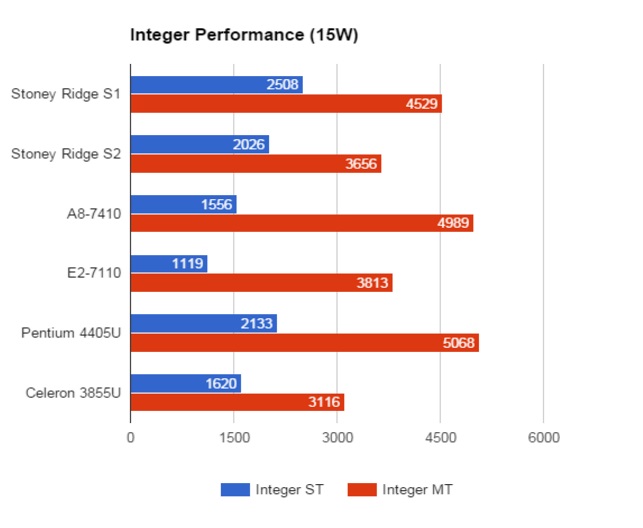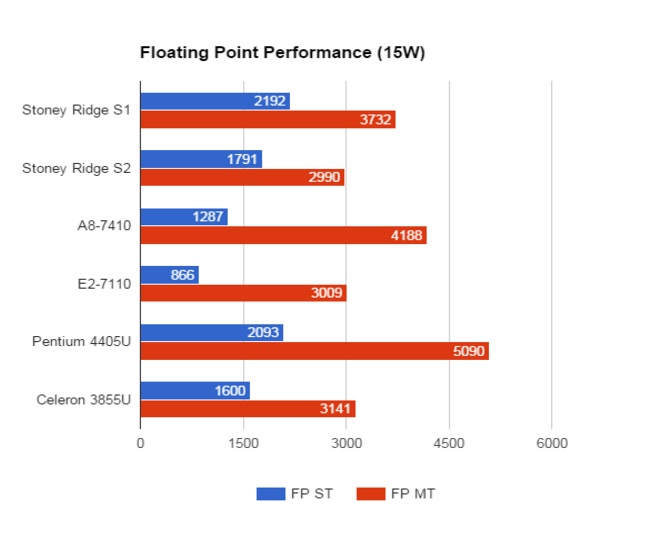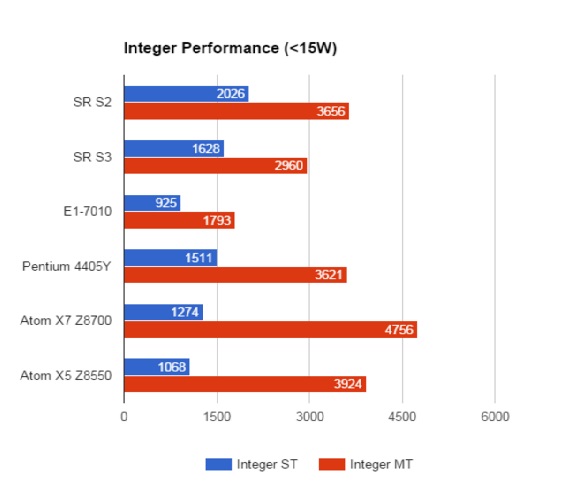Reviving the thread...
Soney Ridge info is here!
AMD’s Stoney Ridge Performance And Market Positioning
Stoney Ridge is AMD’s new low power, low cost, mobile computing line. It succeeds Carrizo-L and is supposed to share the socket with AMD’s higher end Bristol Ridge much like Carrizo-L shared the same socket with Carrizo.

Unlike Carrizo-L which is based on the low power cat cores (4 Puma+ cores) Stoney Ridge is using the bigger architecture and employs the construction cores instead. It uses the latest iteration of the construction cores (Excavator) which was first used in the Carrizo line. Though it is rumored that Stoney Ridge is using a slightly improved version of the core (Excavator+).
What we know about Stoney Ridge is that it uses a single Excavator module, which means two cores. It also has three Radeon clusters (192 stream processors) and a single 64bit DDR3/4 memory controller.
From a CPU performance point of view, Stoney Ridge presents a departure from the typical AMD low end APU designs. Where due to the characteristics of the cat cores the x86 performance was heavily weighed towards multi-threaded performance at the expense of single threaded. In Stoney Ridge, however, the use of XV cores allows the APU to scale its single threaded performance much higher than any previous low end APU from AMD. Though due to the fact that there is only a single XV module, multi-threaded performance is expected to regress, specially in FP workloads.
It is also worth mentioning that it is due to the multitude of power saving features that went into the XV design AMD was finally able to scale its more powerful cores down to the low power low value segment. With APUs expected to have as low as 6 watts of TDP.
The GeekBench3 database now has multiple entries for three Stoney Ridge samples. These samples have the following identification strings:
S1 => ZM2401AFY23AC_35/29/11/06_98E4
S2 => ZM2401AVY23AC_28/24/11/05_98E4
S3 => ZM2401AVY23AC_22/20/10/04_98E4
These can be found here:
http://browser.primatelabs.com/geekbench3/5129061
http://browser.primatelabs.com/geekbench3/5141631
http://browser.primatelabs.com/geekbench3/5140915
Source:
http://wccftech.com/amds-stoney-ridge-performance-market-positioning-detailed/
----
Thanks
Khalid Moammer for the information...
Also this is found too:
Sample -
Cores - Clock (idle/base/turbo) -
GPU Cores - GPU Clock - TDP
S1 - 2 - 1.1/2.9/3.5GHZ - 192 - 600MHZ -15W?
S2 - 2 - 1.1/2.4/2.8GHZ - 192 - 500MHZ - ???
S3 - 2 - 1.0/2.0/2.2GHZ - 192 - 400MHZ - 6W?
Seems that SR are all of them Dual Core who goes from 6 Watts to 15 watts, so, that means that SR is made with 28nm High Dense Libraries tech.
My guess is this:
S1 - A6 9XXX chip (8XXX chip might get ditched)
S2 - A4 9XXX chip
S3 - E2 9XXX chip
So, maybe the infamous E1 chip is gone forever and for good.
Comparing to the competition on 15 Watts
Ok, seems that Stoney Ridge has a good performance against all Dual Core on Integer and on Floating they managed to catch up.
BTW, the E2 was supposed to compete against Celeron and the A8 against the i3...
Now with the supposed to be sucessor of the E2 or even E1....
If that ends true, it would be wonderful for AMD to manage to tie against Intel in the low tier...
BTW, that E1-7010 sucks hard and is compared against the VIA C3....







